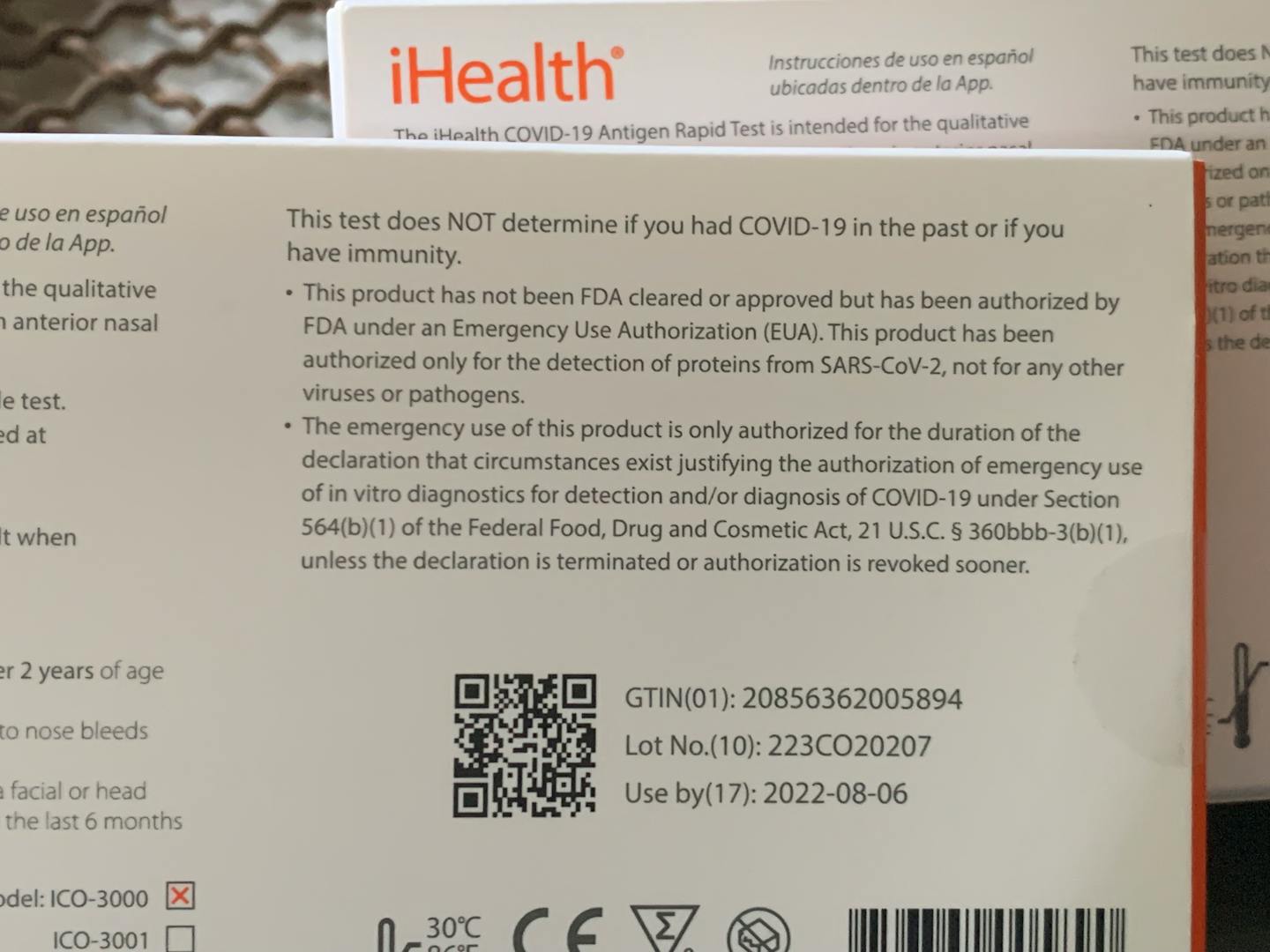Got free COVID-19 tests from the state of Minnesota with expiration dates shorter than the milk in your fridge?
Fear not, state health officials said Tuesday. Federal regulators extended the usefulness of the iHealth rapid antigen tests for three months beyond their listed expiration dates, giving Minnesotans more time to use them if they develop symptoms or ahead of travels or group events.
The extension will reduce waste from Minnesota's $6.5 million giveaway of 1 million COVID-19 home tests. Tests might be needed less in the summer, when public health experts predict lower COVID-19 levels in Minnesota, but more in the fall ahead of any surge in coronavirus infections when schools reopen and people spend more time indoors.
"This moves the expiration date for most of those tests well into the fall and some out as far as the end of the year," Garry Bowman, a Minnesota Department of Health spokesman, said in a written statement. People can look up the new expiration dates by entering the lot number of their tests on the manufacturer's website.
Minnesota reported an uptick in test orders last week after the state doubled the allowance for households, allowing them to obtain up to four free kits containing eight nasal swab tests in all. Nearly 700,000 tests have been ordered.
Many Minnesotans were surprised when their kits arrived this week with expiration dates as early as mid-July.
The three-month extension only applies to the iHealth tests with listed expiration dates no later than Sept. 29. Other tests beyond their permitted expiration dates shouldn't be used, because the chemical and molecular components won't be as effective at detecting the coronavirus that causes COVID-19.
Even when valid, at-home rapid antigen tests produce more false negative results than the PCR tests at clinics and Minnesota's free testing centers. Kits contain two tests for this reason so that negative results can be verified. False positive results are rare.
The popularity of home COVID-19 testing has limited Minnesota's tracking of the current spread of the coronavirus, because the results aren't reported publicly. The state on Tuesday reported the identification of another 4,058 infections over the weekend, but that count excludes at-home results as well as people who have mild or asymptomatic COVID-19 and don't seek testing at all.
Publicly reported tests have identified infections among 1.5 million Minnesotans since the start of the pandemic in March 2020. However, the Centers for Disease Control and Prevention estimated that nearly 3.4 million people in the state already had been infected by mid-February, based on a check of COVID-19 antibody levels in blood samples submitted for medical tests.
Health officials in Minnesota are discussing how they can estimate the prevalence of at-home tests and positive results, perhaps by conducting surveys or examining pharmacy inventories, said Dr. Ruth Lynfield, state epidemiologist and chief medical officer of the Minnesota Department of Health.
The good news is that this spring's COVID-19 wave appears to be leveling off or declining in Minnesota, and the circulating coronavirus strains haven't produced as many severe illnesses as prior strains. COVID-19 hospitalizations in Minnesota declined slightly to 400 on Monday. Only 10% of those patients received intensive care, compared to ICU usage rates of 30% or higher during other pandemic waves.
The state on Tuesday reported another eight COVID-19 deaths, including seven seniors. Minnesota's COVID-19 death toll has reached 12,682.
Monday's state breakthrough report showed that vaccines have offered only marginal protection against infection by the circulating coronavirus variants but stronger protection against COVID-19 hospitalization and death — especially for seniors. The rate of COVID-19 hospitalizations was 4.3 times higher over the past 60 days among unvaccinated seniors than those who had received initial COVID-19 vaccinations plus booster doses.
Lynfield said high immunity levels from vaccinations and recent infections have helped dampen the impact of the latest wave. Stronger supplies of antiviral drugs and monoclonal antibody therapies have made a difference as well because they reduce the chances of severe illness or hospitalization if taken early in the course of an infection.
"We should just remember that this is not the last scene we have with this virus," Lynfield said. "We've got to keep our eyes open, and we've got to be prepared, but we definitely are in much better shape than we've ever been in."






